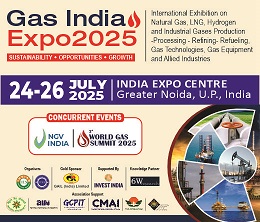North America Marine Engine Market (2025-2031) | Size, Share, Growth, Forecast, Revenue, Outlook & Trend
Market Forecast By Power (Up to 1000 Hp, 1001 Hp to 5000 Hp, 5001 Hp to 10000 Hp, 10001 Hp to 20000 Hp, and Above 20000 Hp), By Applications (Commercial Vessels, Offshore Support Vessels, and Other Vessels), By Fuel (Heavy Fuel Oil, Intermediate Fuel Oil, Marine Diesel Oil, Marine Gas Oil, and Other Fuels), By Key Countries (the United States, Canada and Rest of North America) and Competitive Landscape.
| Product Code: ETC000839 | Publication Date: Jul 2022 | Updated Date: Mar 2025 | Product Type: Report | |
| Publisher: 6Wresearch | No. of Pages: 200 | No. of Figures: 90 | No. of Tables: 30 | |
North America Marine Engine Market Highlights
| Report Name | North America Marine Engine Market |
| Forecast Period | 2025-2031 |
| Market Size | USD 4.8 billion by 2031 |
| CAGR | 7.5% |
| Growing Sector | Marine diesel |
Topics Covered in the North America Marine Engine Market Report
North America Marine Engine Market report thoroughly covers the market by power, application, fuel and countries. The market report provides an unbiased and detailed analysis of the ongoing market trends, opportunities/high growth areas, and market drivers which would help the stakeholders to devise and align their market strategies according to the current and future market dynamics.
North America Marine Engine Market Size & Analysis
The North America marine engine market was valued at USD 3.6 billion in 2025 and is expected to reach USD 4.8 billion by 2031. Rising maritime traffic, need for fuel-efficient engines, and tough emission rules all contribute to growth, as do advances in marine propulsion technologies and the expansion of offshore energy projects.
North America Marine Engine Market Synopsis
The North America marine engine market is predicted to rise steadily, owing to increased maritime traffic, rising demand for fuel-efficient engines, and advances in marine propulsion technology. Government emissions rules and the expansion of offshore energy projects fuel market growth, ensuring ongoing development in the coming years.
According to 6Wresearch, North America Marine Engine Market size is expected to grow at a significant CAGR of 7.5% during 2025-2031. The increasing demand for commercial vessels is a major driver of the North American marine engine market. The requirement for cargo ships, tankers, and other commercial boats that need strong and effective marine engines is growing as a result of increased worldwide trade. It is anticipated that this trend would encourage market expansion. The need for marine engines is also growing as a result of the growing popularity of maritime tourism. Sales of pleasure boats and yachts have increased in North America as a result of the substantial growth in recreational boating and water sports. The demand for sophisticated and fuel-efficient marine engines is anticipated to rise throughout the forecast period due to the increase in recreational boating, which will further fuel the North America marine engine market growth.
Strict emission standards present a major obstacle for marine engine producers since they necessitate a large investment in R&D, which lowers profitability. Strict emission regulations enforced by regulatory agencies encourage businesses to develop and implement greener solutions. Furthermore, marine engines' high initial prices continue to be a deterrent, especially for small boat owners and operators. The cost of purchasing and maintaining cutting-edge marine engines restricts market expansion, particularly in North America's developing nations. Despite rising consumer and regulatory demand, these financial limitations may deter investments in modern ships and hinder the development of environmentally friendly and energy-efficient marine engines.
North America Marine Engine Market Trends
The North America marine engine industry is being shaped by the growing use of electric and hybrid propulsion technologies. The need for marine engines powered by alternative fuels is being driven by environmental concerns and strict pollution rules, which has resulted in notable advancements in hybrid and electric propulsion. Furthermore, technological developments in engine design are raising overall performance, decreasing emissions, and increasing efficiency. In order to meet the growing demand from smaller vessel segments, manufacturers are concentrating on creating engines that are lightweight and compact. These patterns show that the maritime industry is moving toward sustainability and innovation, which will guarantee that marine transportation becomes more ecologically conscious and fuel-efficient in the future.
Investment Opportunities in the North America Marine Engine Market
The North America marine engine market provides lucrative investment prospects for both established businesses and new entrants. Partnerships and agreements with shipbuilding companies can help businesses obtain long-term engine supply contracts. In order to fulfill the growing demand, production facilities in North American emerging markets can also be expanded. As the sector transitions to sustainability, investments in cutting-edge technology, like hybrid propulsion systems and alternative fuel, offer development possibilities. Businesses concentrating on research and development of energy-efficient marine engines will have a competitive edge in this changing sector due to growing regulatory support and the desire for environmentally friendly solutions.
Leading Players in the North America Marine Engine Market
Several significant competitors dominate the North American marine engine market, driving industry developments through innovation and strategic expansion. MAN Energy Solutions SE, Volvo Penta, Wärtsilä Corporation, Rolls-Royce Holdings plc, Caterpillar Inc., Cummins Inc., and Yanmar Co., Ltd. are some of the major corporations. These companies make significant investments in R&D to increase engine longevity, lower emissions, and improve fuel efficiency. To increase their market presence, they also establish strategic partnerships with government agencies and shipbuilders. These major competitors are well-positioned to propel the sector forward due to technical advancements and the rising demand for environmentally friendly marine engines.
Government Regulations
Governments in North America are actively assisting the maritime industry through a number of programs, such as encouraging the use of alternative fuels and making investments in port infrastructure. To cut emissions, the Maritime Administration (MARAD) of the U.S. Department of Transportation is developing marine engine technology. Policies to promote ecologically friendly and fuel-efficient vessels are also being implemented in Canada and Mexico. Innovation in maritime propulsion is further encouraged by incentives including tax breaks, research grants, and financing for sustainable energy initiatives. By guaranteeing adherence to international environmental standards and boosting the competitiveness of the local maritime industry, these government initiatives hope to promote the sector's long-term growth.
Future Insights of the North America Marine Engine Market
The future of the North America marine engine market appears bright, with continued technology breakthroughs and a growing emphasis on sustainability. Stricter pollution standards will put manufacturers to the test, but they will also spur the development of cleaner propulsion technology. The transition to electric and hybrid marine engines will open up new growth opportunities, and government programs and market player partnerships will help the industry grow even more. More research and development expenditures will also result in marine engines that are more environmentally friendly and efficient. The sector is expected to grow steadily and sustainably as the need for high-performance, fuel-efficient engines increases.
Market Segmentation Analysis
The report offers a comprehensive study of the subsequent market segments and their leading categories.
Marine diesel oil to dominate the Market - by Fuels
According to Ravi Bhandari, Research Head, 6Wresearch, the marine diesel oil segment dominates the North America marine engine market, owing to its widespread use in commercial vessels due to dependability, efficiency, and cost-effectiveness. Its high energy density and compliance with emissions rules contribute to its sustained supremacy in the area maritime industry.
United States to dominate the Market - by Countries
The United States dominates the North American marine engine market, thanks to a robust maritime industry, substantial commercial shipping operations, and expanding marine tourism. Government initiatives, technological developments, and rising demand for fuel-efficient engines all help to solidify the country's market leadership.
Key Attractiveness
- 10 Years Market Numbers.
- Historical Data Starting from 2021 to 2024.
- Base Year 2024
- Forecast Data until 2031.
- Key Performance Indicators Impacting the Market.
- Major Upcoming Developments and Projects.
Key Highlights of the Report:
- North America Marine Engine Market Overview
- North America Marine Engine Market Outlook
- North America Marine Engine Market Forecast
- Historical Data of Marine Engine Market Revenues for the Period 2021-2031
- North America Marine Engine Market Size and North America Marine Engine Market Forecast of Revenues, Until 2031
- Historical Data of North America Marine Engine Market Revenues, by Power, for the Period 2021-2031
- Market Size & Forecast of North America Marine Engine Market Revenues, by Power, until 2031
- Historical Data of North America Marine Engine Market Revenues, By Applications, for the Period 2021-2031
- Market Size & Forecast of North America Marine Engine Market Revenues, By Applications, until 2031
- Historical Data of North America Marine Engine Market Revenues, by Fuel, for the Period 2021-2031
- Market Size & Forecast of North America Marine Engine Market Revenues, by Fuel, until 2031
- Historical Data of United States Marine Engine Market Revenues, for the Period 2021-2031.
- Market Size & Forecast of United States Marine Engine Market Revenues, until 2031.
- Historical Data of Canada Marine Engine Market Revenues, for the Period 2021-2031.
- Market Size & Forecast of Canada Marine Engine Market Revenues, until 2031.
- Market Drivers and Restraints
- North America Marine Engine Market Trends and Industry Life Cycle
- Porter’s Five Force Analysis
- Market Opportunity Assessment
- North America Marine Engine Market Share, By Regions
- North America Marine Engine Market Share, By Players
- North America Marine Engine Market Overview on Competitive Benchmarking
- Company Profiles
- Key Strategic Recommendations
Market Covered
The North America Marine Engine Marketreport provides a detailed analysis of the following market segments
By Power
- Up to 1000 HP
- 1001 HP to 5000 HP
- 5001 HP to 10000 HP
- 10001 HP to 20000 HP
- Above 20000 HP
By Applications
- Commercial Vessels
- Offshore Support Vessels
- Other Vessels
By Fuel
- Heavy Fuel Oil
- Intermediate Fuel Oil
- Marine Diesel Oil
- Marine Gas Oil
- Other Fuels
By Key Countries
- United States
- Canada
- Rest of North America
North America Marine Engine Market (2025-2031): FAQs
| 1. Executive Summary |
| 2. Introduction |
| 2.1 Report Description |
| 2.2 Key Highlights of The Report |
| 2.3 Market Scope & Segmentation |
| 2.4 Research Methodology |
| 2.5 Assumptions |
| 3. North America Marine Engine Market Overview |
| 3.1 North America Marine Engine Market Revenues, 2021-2031F |
| 3.2 North America Marine Engine Market Revenue Share, By Power, 2021 & 2031F |
| 3.3 North America Marine Engine Market Revenue Share, By Applications, 2021 & 2031F |
| 3.4 North America Marine Engine Market Revenue Share, By Fuel, 2021 & 2031F |
| 3.5 North America Marine Engine Market Revenue Share, By Regions, 2021 & 2031F |
| 3.6 North America Marine Engine Market Industry Life Cycle |
| 3.7 North America Marine Engine Market- Porter's Five Forces |
| 4. North America Marine Engine Market Dynamics |
| 4.1 Impact Analysis |
| 4.2 Market Drivers |
| 4.3 Market Restraints |
| 5. North America Marine Engine Market Trends |
| 6. North America Marine Engine Market Overview, By Power |
| 6.1 North America Upto 1000 Hp Market Revenues, 2021-2031F |
| 6.2 North America 1001 Hp to 5000 Hp Market Revenues, 2021-2031F |
| 6.3 North America 5001 Hp to 10000 Hp Market Revenues, 2021-2031F |
| 6.4 North America 10001 Hp to 20000 Hp Market Revenues, 2021-2031F |
| 6.5 North America Above 20000 Hp Market Revenues, 2021-2031F |
| 7. North America Marine Engine Market Overview, By Applications |
| 7.1 North America Commercial Vessels Market Revenues, 2021-2031F |
| 7.2 North America Offshore support Vessels Market Revenues, 2021-2031F |
| 7.3 North America Other Vessels Market Revenues, 2021-2031F |
| 8. North America Marine Engine Market Overview, By Fuel |
| 8.1 North America Marine Engine Market Revenues, Heavy Fuel Oil 2021-2031F |
| 8.2 North America Marine Engine Market Revenues, By Intermediate Fuel Oil, 2021-2031F |
| 8.3 North America Marine Engine Market Revenues, By Marine Diesel Oil, 2021-2031F |
| 8.4 North America Marine Engine Market Revenues, By Marine Gas Oil , 2021-2031F |
| 8.5 North America Marine Engine Market Revenues, By Other Fuels, 2021-2031F |
| 9. United States Marine Engine Market Overview |
| 9.1 United States Marine Engine Market Revenues, 2021-2031F |
| 9.2 United States Marine Engine Market Revenues, By Power, 2021-2031F |
| 9.3 United States Marine Engine Market Revenues, By Applications, 2021-2031F |
| 9.4 United States Marine Engine Market Revenues, By Fuel, 2021-2031F |
| 10. Canada Marine Engine Market Overview |
| 10.1 Canada Marine Engine Market Revenues, 2021-2031F |
| 10.2 Canada Marine Engine Market Revenues, By Power, 2021-2031F |
| 10.3 Canada Marine Engine Market Revenues, By Applications, 2021-2031F |
| 10.4 Canada Marine Engine Market Revenues, By Fuel, 2021-2031F |
| 11. Rest of North America Marine Engine Market Overview |
| 11.1 Rest of North America Marine Engine Market Revenues, 2021-2031F |
| 12. North America Marine Engine Market Opportunity Assessment |
| 12.1 North America Marine Engine Market Opportunity Assessment, By Power, 2031F |
| 12.2 North America Marine Engine Market Opportunity Assessment, By Applications, 2031F |
| 12.3 North America Marine Engine Market Opportunity Assessment, By Feul, 2031F |
| 13. North America Marine Engine Market Competitive Landscape |
| 13.1 North America Marine Engine Market Revenue Share, By Companies, 2024 |
| 13.1.1 United States Marine Engine Market Revenue Share, By Companies, 2024 |
| 13.1.2 Canada Marine Engine Market Revenue Share, By Companies, 2024 |
| 13.2 North America Marine Engine Market Competitive Benchmarking, By Operating Parameters |
| 14. Company Profiles |
| 15. Strategic Recommendations |
| 16. Disclaimer |
- Single User License$ 4,560
- Department License$ 5,055
- Site License$ 5,595
- Global License$ 6,000
Search
Related Reports
- Saudi Arabia Manlift Market (2025-2031) | Outlook, Size, Growth, Trends, Companies, Industry, Revenue, Value, Share, Forecast & Analysis
- Uganda Excavator, Crane, and Wheel Loaders Market (2025-2031) | Strategy, Consumer Insights, Analysis, Investment Trends, Opportunities, Growth, Size, Share, Industry, Revenue, Segments, Value, Segmentation, Supply, Forecast, Restraints, Outlook, Competition, Drivers, Trends, Demand, Pricing Analysis, Competitive, Strategic Insights, Companies, Challenges
- Rwanda Excavator, Crane, and Wheel Loaders Market (2025-2031) | Strategy, Consumer Insights, Analysis, Investment Trends, Opportunities, Growth, Size, Share, Industry, Revenue, Segments, Value, Segmentation, Supply, Forecast, Restraints, Outlook, Competition, Drivers, Trends, Demand, Pricing Analysis, Competitive, Strategic Insights, Companies, Challenges
- Kenya Excavator, Crane, and Wheel Loaders Market (2025-2031) | Strategy, Consumer Insights, Analysis, Investment Trends, Opportunities, Growth, Size, Share, Industry, Revenue, Segments, Value, Segmentation, Supply, Forecast, Restraints, Outlook, Competition, Drivers, Trends, Demand, Pricing Analysis, Competitive, Strategic Insights, Companies, Challenges
- Angola Excavator, Crane, and Wheel Loaders Market (2025-2031) | Strategy, Consumer Insights, Analysis, Investment Trends, Opportunities, Growth, Size, Share, Industry, Revenue, Segments, Value, Segmentation, Supply, Forecast, Restraints, Outlook, Competition, Drivers, Trends, Demand, Pricing Analysis, Competitive, Strategic Insights, Companies, Challenges
- Israel Intelligent Transport System Market (2025-2031) | Strategy, Consumer Insights, Analysis, Investment Trends, Opportunities, Growth, Size, Share, Industry, Revenue, Segments, Value, Segmentation, Supply, Forecast, Restraints, Outlook, Competition, Drivers, Trends, Demand, Pricing Analysis, Competitive, Strategic Insights, Companies, Challenges
- Uganda Precast and Aggregate Market (2025-2031) | Strategy, Consumer Insights, Analysis, Investment Trends, Opportunities, Growth, Size, Share, Industry, Revenue, Segments, Value, Segmentation, Supply, Forecast, Restraints, Outlook, Competition, Drivers, Trends, Demand, Pricing Analysis, Competitive, Strategic Insights, Companies, Challenges
- Australia IT Asset Disposal Market (2025-2031) | Strategy, Consumer Insights, Analysis, Investment Trends, Opportunities, Growth, Size, Share, Industry, Revenue, Segments, Value, Segmentation, Supply, Forecast, Restraints, Outlook, Competition, Drivers, Trends, Demand, Pricing Analysis, Competitive, Strategic Insights, Companies, Challenges
- UAE Building Thermal Insulation Market Outlook (2025-2031) | Revenue, Companies, Share, Trends, Growth, Size, Forecast, Industry, Analysis & Value
- Portugal Electronic Document Management Market (2025-2031) | Strategy, Consumer Insights, Analysis, Investment Trends, Opportunities, Growth, Size, Share, Industry, Revenue, Segments, Value, Segmentation, Supply, Forecast, Restraints, Outlook, Competition, Drivers, Trends, Demand, Pricing Analysis, Competitive, Strategic Insights, Companies, Challenges
Industry Events and Analyst Meet
Our Clients
Whitepaper
- Middle East & Africa Commercial Security Market Click here to view more.
- Middle East & Africa Fire Safety Systems & Equipment Market Click here to view more.
- GCC Drone Market Click here to view more.
- Middle East Lighting Fixture Market Click here to view more.
- GCC Physical & Perimeter Security Market Click here to view more.
6WResearch In News
- Doha a strategic location for EV manufacturing hub: IPA Qatar
- Demand for luxury TVs surging in the GCC, says Samsung
- Empowering Growth: The Thriving Journey of Bangladesh’s Cable Industry
- Demand for luxury TVs surging in the GCC, says Samsung
- Video call with a traditional healer? Once unthinkable, it’s now common in South Africa
- Intelligent Buildings To Smooth GCC’s Path To Net Zero













